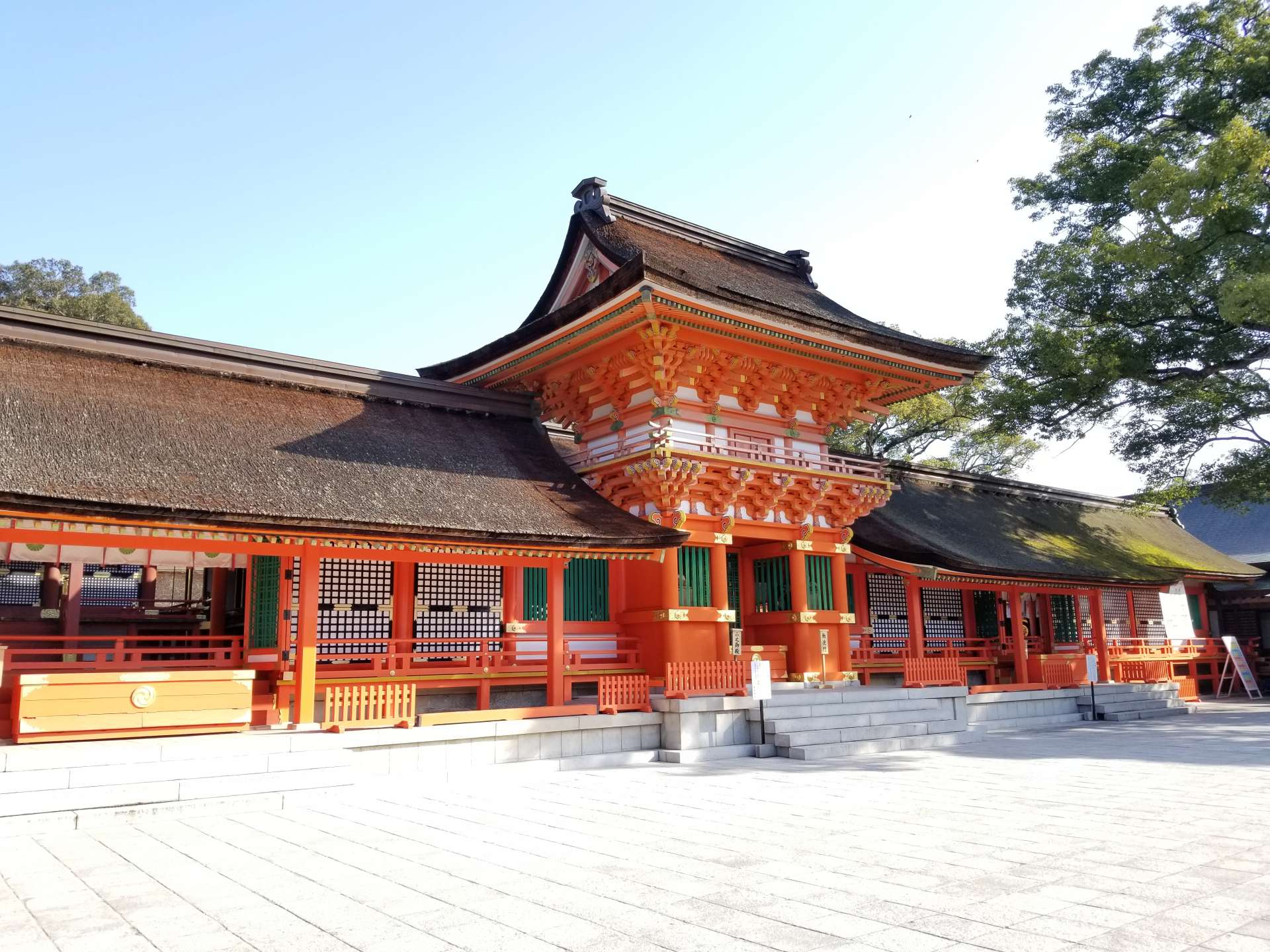12月中旬に訪れたら紅葉がとても綺麗でした!
境内は広いのでサクサクみても1時間程度かかりす。
良縁や夫婦円満にご利益があるといわれる夫婦石は、岩だと思い込んでいたので危うく見落としそうに…地面に埋められた2つの三角形の石でした(案内板があります!)
参道で購入した板状の"宇佐飴"は、麦芽ともち米だけで作られているそう。自然な甘みが癖になる美味しさ!ですが、ものすごくかたいので歯が弱い人は要注意!!!

Verified [Verified] denotes information that has been published with confirmation of its owing parties.
Usa Jingu Shrine
Pray for happiness at the main shrine of Hachiman Shrine, which is worshipped throughout Japan.
More than 40,000 Hachiman shrines throughout Japan, which are called "Hachiman-sama" and worshiped in various places, are the largest number among Shinto shrines. The main shrine is Usa Jingu, built in the 2nd year of the Jinki era (725). It is the second-largest shrine in Japan after Ise Jingu Shrine and is revered by the imperial family.
In the Jogu(upper shrine) stands the brightly painted vermilion Chokushimon Gate (Imperial gate), the face of the Usa Jingu Shrine. The main shrine, designated as a national treasure, is located inside this gate and enshrines Emperor Ojin (Hachiman-daijin) in the Ichino goten(first hall), Hime-daijin in the Nino goten(second hall), and Empress Jingu, mother of Emperor Ojin, in the Sanno goten(third hall). Hachiman-O-kami is widely worshipped throughout Japan and is believed to have divine solid power to bring good fortune in all fields. The same deity is enshrined at Gegu(Lower Shrine), so do not forget to visit the shrine. The method of worship is "Ni-rei, shi-hakushu, Ichi-rei" (two bows, four claps, and one bow). Unlike the standard two-clap way, the ancient custom is to clap hands four times.
The covered Kure Bridge, which spans the west side of the shrine, has been in existence since before the Kamakura period (1185-1333) and was passed by imperial envoys (messengers of the emperor). Today, the doors of this bridge are opened only once every ten years during the Imperial Envoy Festival.
Highlights
-
It is the main shrine of Hachiman shrines located throughout the country and is a usual power spot in Oita Prefecture.
-
The main shrine is designated as a national treasure.
-
The worship is not the standard "Ni-rei Ni-Hakushu-Ichi-rei" (two bows, two claps and one bow) but "Ni-rei Shi-Hakushu-Ichi-rei" (two bows, four claps and one bow).
-
Kurehashi Bridge, which has existed since before the Kamakura period, is opened only once every ten years during the Imperial Envoy Festival.
Photos
-
![Usa Jingu Chokushimon Gate (Imperial gate)]()
Usa Jingu Chokushimon Gate (Imperial gate)
-
![Kure-hashi Bridge, through which envoys from the Imperial Court passed]()
Kure-hashi Bridge, through which envoys from the Imperial Court passed
-
![Taiko-Bashi Bridge]()
Taiko-Bashi Bridge
-
![Otorii gate welcoming worshippers]()
Otorii gate welcoming worshippers
-
![Hachiman Torii Gate, designated as a Tangible Cultural Property of Oita Prefecture]()
Hachiman Torii Gate, designated as a Tangible Cultural Property of Oita Prefecture
-
![Tounokuma Shinkyou Bridge and Kurehashi Bridge]()
Tounokuma Shinkyou Bridge and Kurehashi Bridge
-
![Shinji Yabusame (horseback archery) ritual on August 1]()
Shinji Yabusame (horseback archery) ritual on August 1
-
![Haraedo (purification hall of a Shinto shrine)]()
Haraedo (purification hall of a Shinto shrine)
Reviews
Details
- Name in Japanese
- 宇佐神宮
- Postal Code
- 872-0102
- Address
- 2859 Minamiusa, Usa City, Oita
- Telephone
- 0978-37-0001
- Hours
- Always open
- Directions
- Take Oita Hokubu Bus from JR Usa Station, get off at Usa Hachiman Bus Stop, 6 min. Walk from the bus stop.
- Website
- Official Website (Japanese)


















